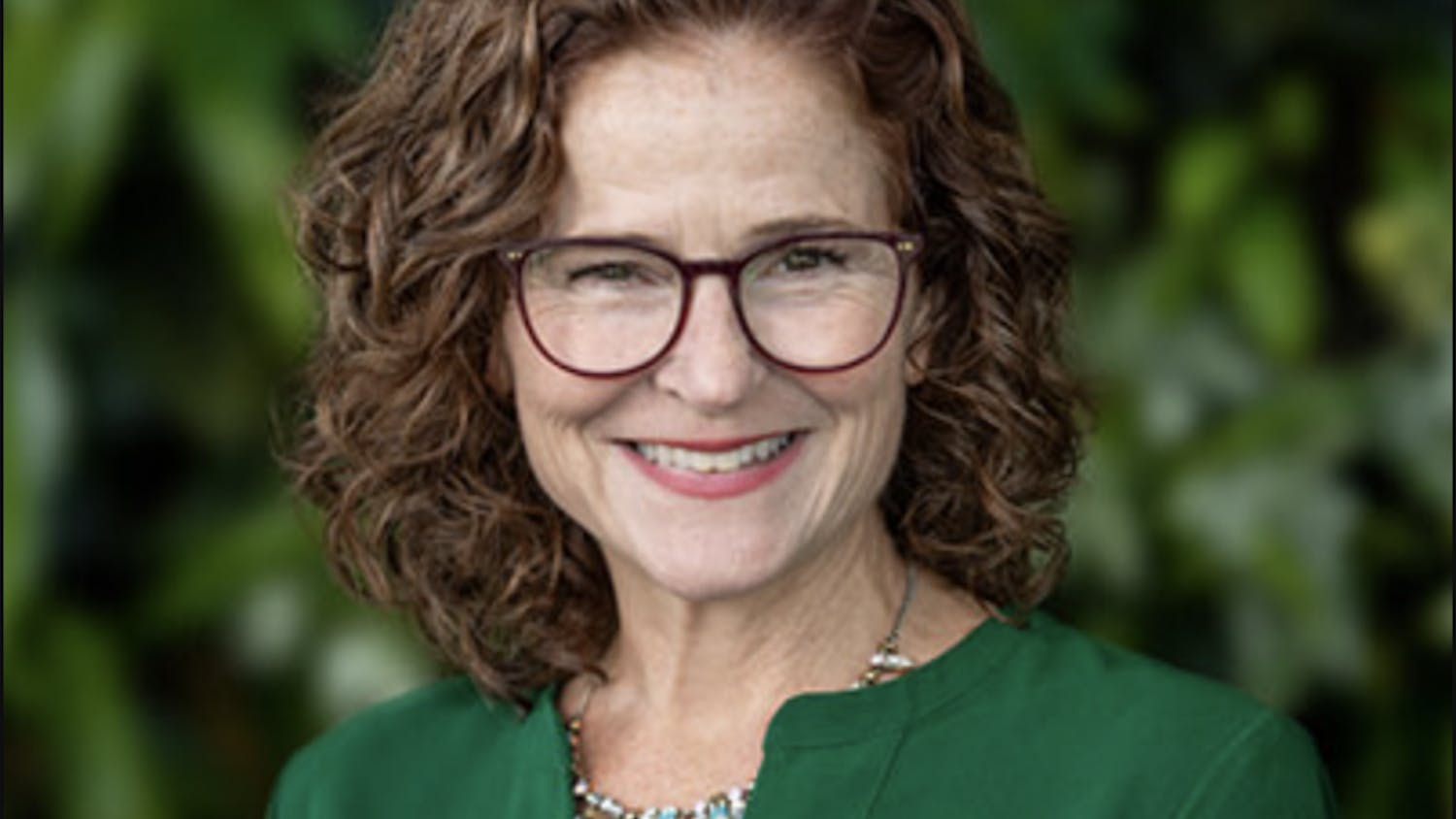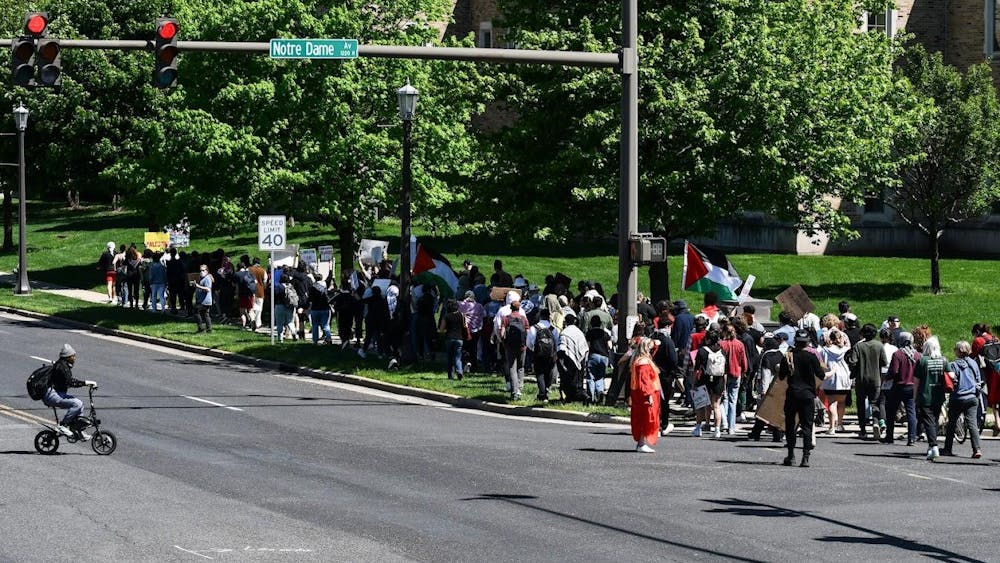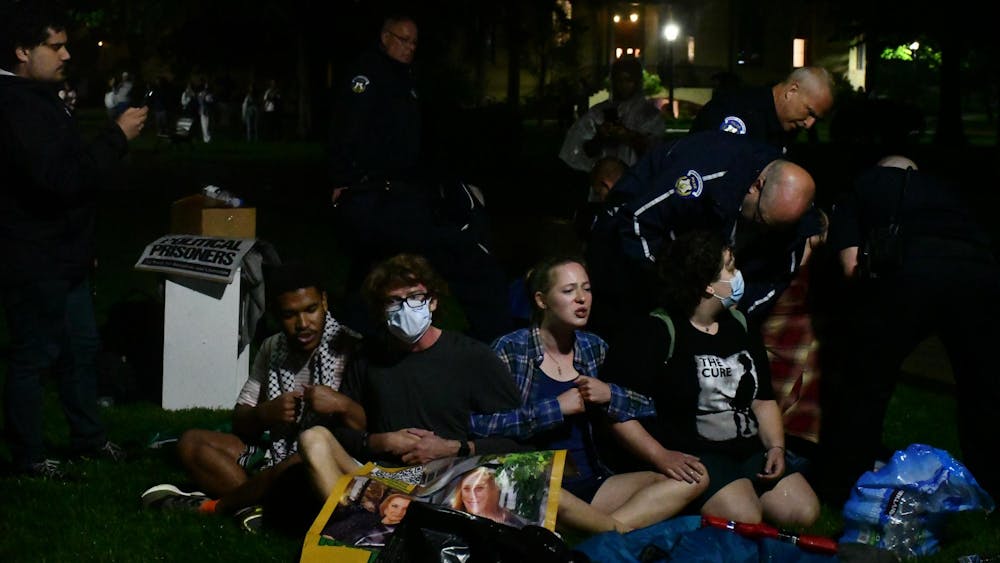Notre Dame students cleaned their plates yesterday on the first Waste-Free Wednesday to reduce the 1.25 tons of food wasted each day in campus dining halls, student Food Services representative Elizabeth Davis said.
"At Notre Dame, we are currently wasting 6.27 ounces per meal," Davis said.

Students who present a clean plate with no wasted leftovers during dinner on Wednesdays in November will be entered into a raffle to win 100 Flex Points.
Food Services, the Office of Sustainability and student government teamed up to bring Waste-Free Wednesdays and the Holy Cross Harvest food drive together under the eND Hunger campaign. They hope to make students more aware of how their food choices affect others, Davis said.
During Energy Awareness Week earlier in the year, Davis and other student volunteers physically scraped the plates and emptied cups after meals at North and South Dining Halls.
The volunteers weighed the wasted food and liquid to find exact numbers for waste at Notre Dame. Davis said the volunteers will return to the dining halls on Nov. 17 to weigh leftovers again and see if the earlier statistics improved after Waste-Free Wednesdays.
The figures collected from the dining halls include liquid waste.
"A lot of people do not realize that liquid is a waste," Davis said. "It was interesting to see how fast everything accumulates."

Plate waste and unusable leftovers from the dining hall are sent through a garbage disposal and then a waste treatment facility, William Yarbrough, associate director of Food Services operations, said.
"The best thing that could happen would be for diners to take only what they could eat or drink and eliminate most of the food waste," Yarbrough said. "Many beverages are costly too, such as milk and juices."
Leftover cooked food that is not used in the dining halls and does not need to be thrown away is donated to the Hope Rescue Mission and the Center for the Homeless in South Bend, Yarbrough said.
"If we used less food because diners were not throwing away 6.27 ounces each meal we would purchase and prepare less food, which would save a significant amount in dollars spent for food each year," Yarbrough said.
Taking less food to begin a meal at the dining hall and going back for more later is a simple way to be conscious of the waste that will remain at the end of the meal, Davis said.
The Holy Cross Harvest food drive also kicked off yesterday for students at Notre Dame and Saint Mary's as another part of eND Hunger, Beth Simpson, chair of student government's eND Hunger campaign, said.
"I think combined with eND hunger as well as the Holy Cross Harvest food drive we can make a unified approach to this issue," Davis said. "Working together creates a greater awareness that can be really positive."
Simpson said waste increases inequality between Notre Dame tables and the tables of those in the local community who suffer from food scarcity.
"It is important not to devalue the reality that one plate does make a difference," Simpson said. "Our personal consumption choices can make an impact on the grand scale."
The vision for the Holy Cross Harvest was a more unified effort for the Food Bank of Northern Indiana.
"The food bank receives wonderful donations from these initiatives," Simpson said. "But they also result in inefficiency because the food bank itself was having to dedicate a lot of time and resources to receiving the donations from these varied efforts."
Students can place non-perishable items and toiletries in collection boxes in their dorms until Nov. 17. The Food Bank of Northern Indiana requested toiletries as a donation because food stamps cannot help families purchase those items, Simpson said.
Student government will also set up tables for Domer Dollar donations during the last week of the drive in the LaFortune Student Center.
"One dollar makes seven meals for the food bank," Simpson said. "Even a small monetary donation makes a huge impact."
The food, toiletries and money will be presented to the food bank during a concluding rally on campus Nov. 17.
"The Office of Sustainability also said they would match with $300 if we raise $300 in donations," Davis said. "We could potentially donate $600 dollars to the food bank if enough people participate, which translates into 4,200 meals."
These meals could serve people living on the West Side of South Bend, the targeted area for the eND Hunger campaign.
"The food drive is an immediate manner for students to contribute to the community and help alleviate food scarcity," Simpson said. "This problem is especially acute during the holiday season when income can be tighter than ever."
Social concerns chair Patrick McCormick said Notre Dame students can use the campaign to guarantee the right to food in local neighborhoods especially during the holidays.
"We wanted to really bring the eND hunger campaign to people," McCormick said. "We can see it in the dorms and in the dining halls where we eat and in our community. We wanted to cover all the bases."
Students from the eND Hunger campaign will attend their second meeting with members of the local community on Nov. 19 to discuss how to best target food scarcity in the West Side of South Bend.
"Many individuals receive the food that is extra from what we do not consume," Simpson said. "As a result, they are not getting what is best nutritionally and they are not able to make healthy food choices because of the injustice in the food system."
The campaign's goals were not to attack a huge issue like world hunger, but to begin fighting against that issue in the University's neighborhood.
"Our hope is that this hunger campaign demonstrates the potential of community engagement on the local level," McCormick said. "We can confront food scarcity there to fight for justice."












